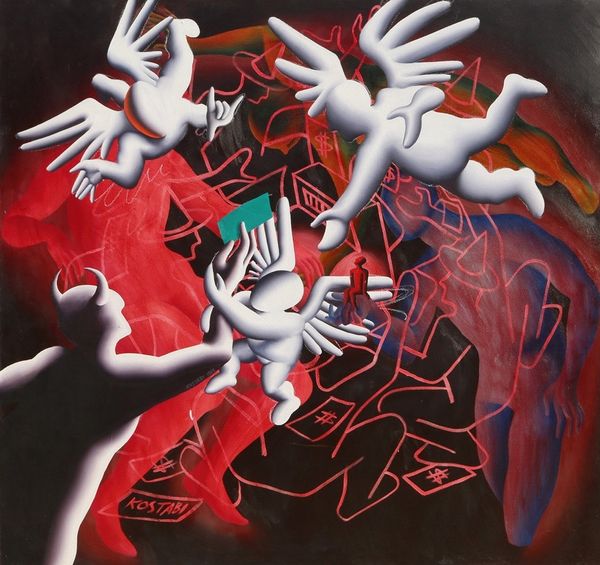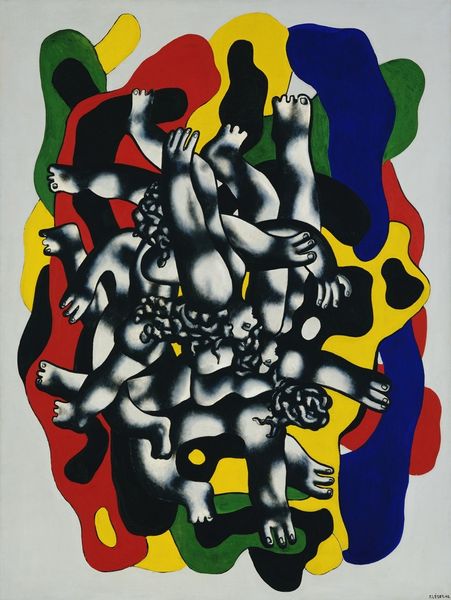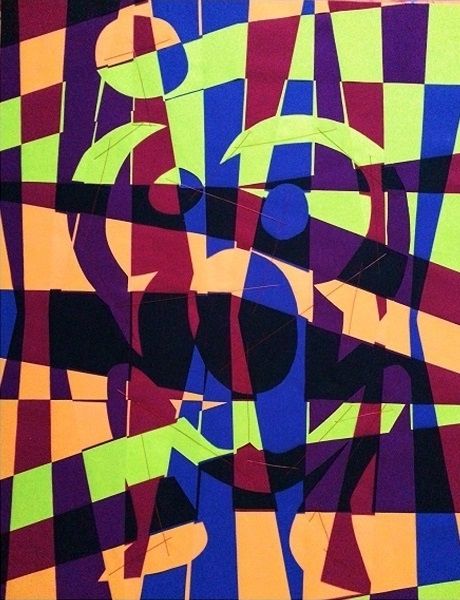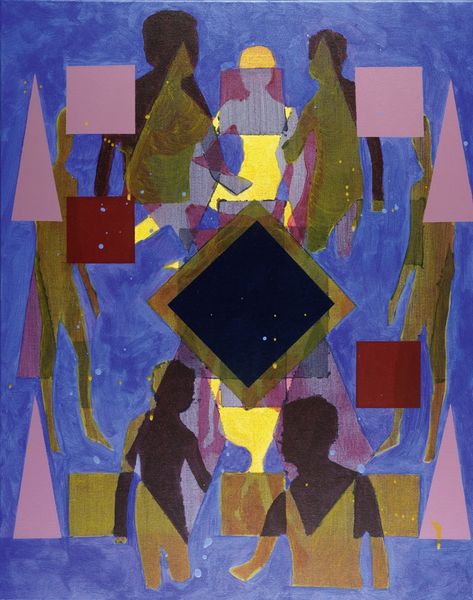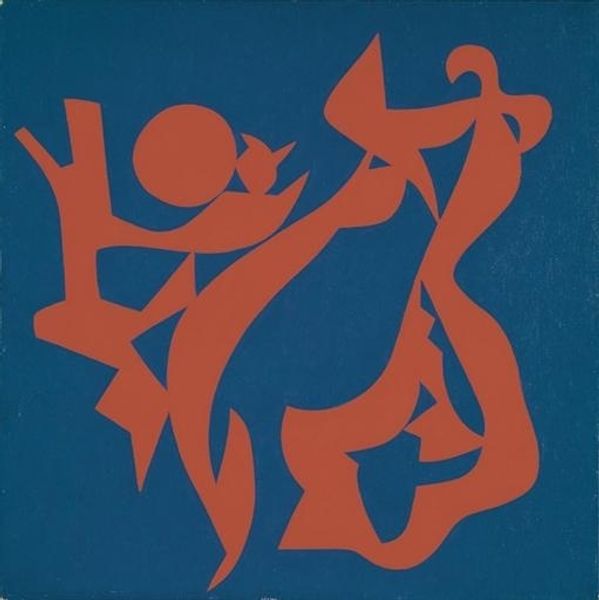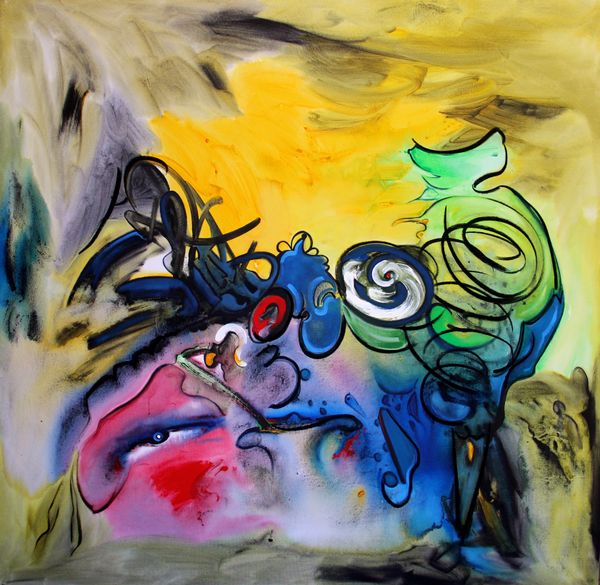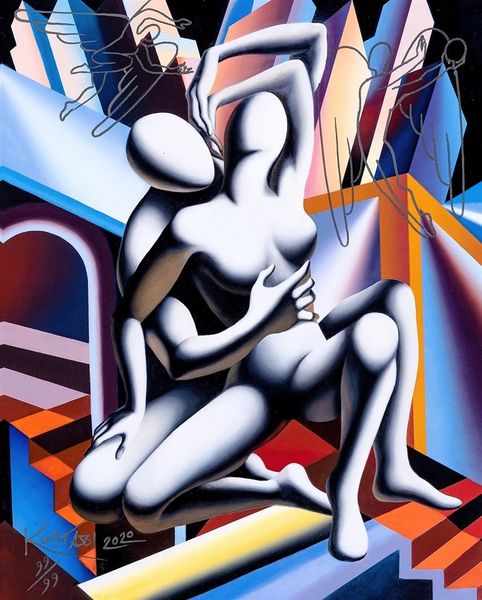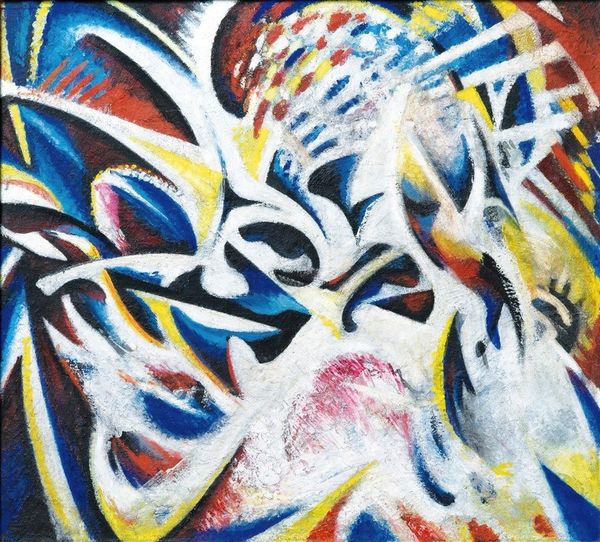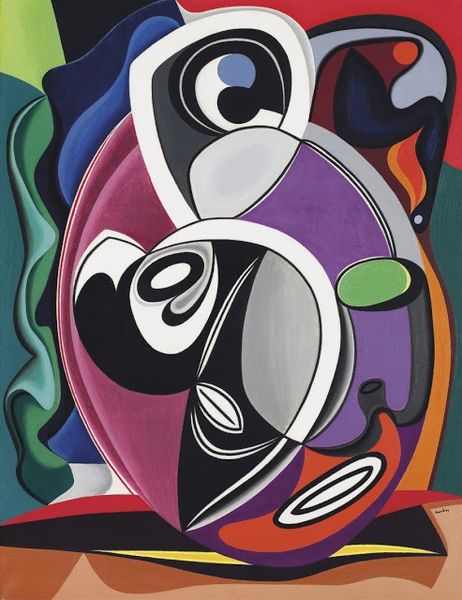
Copyright: Modern Artists: Artvee
Editor: Mark Kostabi's "Cash Dance," painted in 1990 with acrylic, has these surreal figures swirling around what appears to be a bright yellow cash register. The faceless figures, combined with the floating dollar bills, gives me this slightly uneasy, almost satirical feeling. How do you interpret this work? Curator: Unease is a key feeling here, I think. Considering Kostabi’s presence in the East Village art scene during the 80s boom, and this piece emerging in 1990, we can see a sharp critique of the art market itself, and the pervasive commodification of everything. Editor: So, you see this as a commentary on the commercialization of art? The faceless figures—are they representative of something specific? Curator: Precisely. These are archetypes, stripped of individuality, consumed by the dance of capital. The vibrant colors and seemingly playful composition mask a darker commentary. Think about how the figure's anonymity highlights their role as mere consumers or producers within this system. Where is the human connection? Editor: It’s interesting to consider the historical context of the late 80s/early 90s. There’s almost a cautionary feel to the work, especially knowing what was coming. Curator: Absolutely. Kostabi holds up a mirror to our own participation in this cycle. This "dance" implicates everyone. What can art achieve if its goal is purely monetary? Is Kostabi's art offering a path to resist commodification? Or, alternatively, does his popularity reaffirm the same commercialization that it originally critiques? Editor: That’s given me a lot to consider; a darkly playful critique of a system we're all entangled in. Curator: Indeed. Art like this can stimulate introspection.
Comments
No comments
Be the first to comment and join the conversation on the ultimate creative platform.

